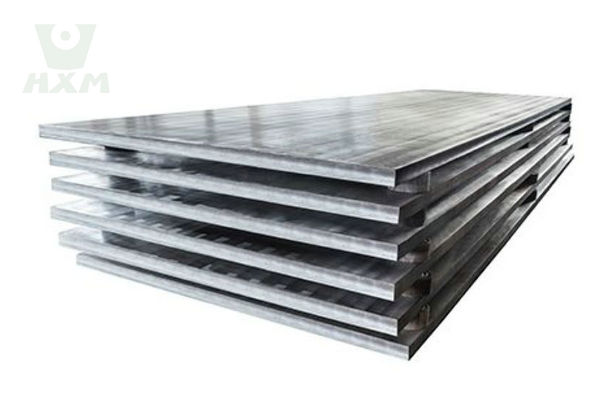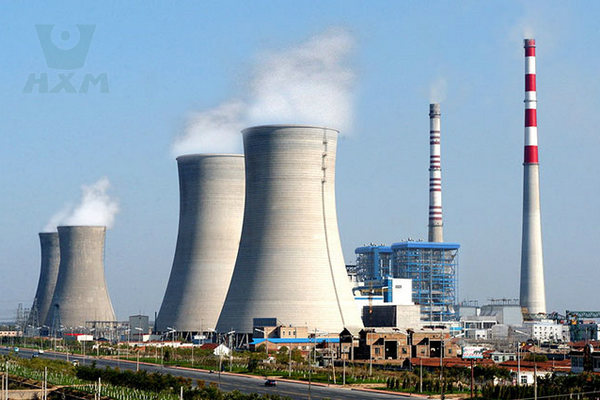Nickel-Based Alloy Clad Plate Manufacturer and Supplier – Huaxiao Metal
Huaxiao Metal is a professional nickel and nickel-based alloy clad plate manufacturer and supplier in China, specializing in developing and selling a variety of metal composite materials to meet your various needs. Huaxiao Metal provides customers with high-quality composite plates and can be your reliable metal partner. The preferential price of nickel clad steel plate depends on the quantity, weight, production process and delivery method of the composite materials in the purchase order. If you have any special requirements for the nickel and nickel-based alloy clad plates sold, please contact us directly!
Nickel-based alloy clad plate is a composite plate that combines nickel-based alloy materials with other metal materials through a certain process. It has excellent corrosion resistance, high-temperature resistance, and mechanical properties. Because nickel-based alloys have excellent oxidation resistance, acid and alkali corrosion resistance, and high-temperature strength, nickel-based alloy composite plates are often used in harsh working environments, such as petrochemicals, marine engineering, nuclear power equipment, and aerospace.

Nickel-Based Alloy Clad Plate Specification
Overall Thickness: 8-120mm
Cladding Thickness: 2-15mm
Width: 3000mm or Customizable
Length: 8000mm or Customizable
Production methods: Explosive composite method; Thick plate rolling method; Continuous hot-rolling method.
Cladding Material Scope: Inconel 625, Monel 400, Hastelloy C276, Incoloy 825, etc.
Base Metal Scope: ASTM A36; ASME SA516 Gr60, Gr60N,Gr65 GR65N, Gr70, Gr70N; ASME SA537 Gr1 Gr2 Gr3; etc.
Contact us today for the latest nickel-based alloy clad plate prices and specifications.
Looking Forward to Becoming One of Your Nickel-Based Alloy Clad Plate Suppliers
Table of Contents
Applications of Nickel-Based Alloy Clad Plate
Chemical Industry: used as materials for storage tanks, pipelines, and heat exchangers in acidic, alkaline, or highly corrosive media.
Energy Field: pressure vessels and steam generators in nuclear power equipment require high-temperature and corrosion-resistant parts.
Marine Engineering: structural parts and equipment resistant to seawater corrosion.
Aerospace: key parts such as high-temperature engine parts and turbine blades that require high temperature and corrosion resistance.

Are you looking for this raw material for your product? Or are you unsure whether the nickel-based composite plate meets your product requirements? You can contact us directly and we will show you our product performance certificates for your reference. We look forward to your inquiry!
Features of Nickel-Based Alloy Clad Plates
Strong Corrosion Resistance: Nickel-based alloys are particularly resistant to corrosive media such as acids and alkalis, making them suitable for equipment manufacturing in the chemical industry.
Good High-Temperature Resistance: It can still maintain high strength and oxidation resistance under high-temperature conditions, and is suitable for equipment working in high-temperature environments.
High Mechanical Strength: Through the composite process, the nickel-based alloy composite plate not only retains the excellent properties of the nickel-based alloy but also enhances the overall strength and toughness by combining it with other materials.
High Cost-Effectiveness: Compared with pure nickel-based alloys, composite plates reduce costs by reducing the use of nickel-based alloys without affecting their application effects.
We have been engaged in the metal industry for more than 10 years. We have a professional production team and a strict quality control department. We are very confident in the nickel-based composite plate. Our products have very good product performance and can meet the strict application of your project. If you have any questions, you can contact us directly to obtain our product quality certificate and price for your reference.
Looking Forward to Becoming One of Your Nickel-Based Alloy Clad Plate Suppliers
Other Types of Nickel-Based Alloy Clad Plate
Nickel-based composite plates can be mainly divided into the following types according to the types of nickel-based alloys, composite processes, and application fields:
Nickel-Stainless Steel Composite Plates
This composite plate is made by combining nickel-based alloys with stainless steel. The nickel-based alloy layer provides excellent corrosion resistance and high-temperature resistance, while the stainless steel layer provides high mechanical strength and toughness. This type of composite plate is often used in chemical and petrochemical industries that require acid, alkali, and corrosion resistance. Equipment and pipelines.
Nickel-Carbon Steel Composite Plate
Nickel-carbon steel composite plates are made by combining nickel-based alloys with carbon steel. The nickel layer provides corrosion resistance, while the carbon steel layer has good structural strength. This composite plate is usually used in pressure vessels, chemical reactors, and other equipment to maintain performance advantages by reducing costs.
Nickel-Copper Composite Plate
The composite material of nickel-based alloys and copper can show good seawater corrosion resistance in marine engineering, shipbuilding, and other fields. This composite plate is particularly widely used in marine environments and is suitable for manufacturing seawater desalination equipment, submarine pipelines, and other structural parts that require corrosion resistance.
Nickel-Titanium Composite Plate
This composite plate combines the corrosion resistance of nickel-based alloys with the lightweight and high-strength characteristics of titanium metal. Nickel-titanium composite plates are mainly used in aerospace, nuclear industry, and fields with extremely high requirements for strength and corrosion resistance, such as heat exchangers, reactor materials, etc.
Nickel-Aluminum Composite Plate
The composite of nickel-based alloys and aluminum is usually used to manufacture lightweight, high-temperature-resistant parts. It is suitable for use in high-temperature environments such as aerospace and engine manufacturing. It can effectively reduce the weight of the material and maintain excellent heat resistance.
Nickel-Based High-Temperature Alloy Composite Plate
This composite plate is usually composed of nickel-based high-temperature alloys and other metals. It has extremely high heat resistance and oxidation resistance and can maintain good mechanical properties in high-temperature environments exceeding 1000°C. It is mainly used in fields such as aircraft engines and gas turbines that require high-temperature-resistant materials.
Bimetallic Composite Plate
The bimetallic composite plate is a composite of two different metals through a special process. Usually, the nickel-based alloy is the surface layer and the bottom layer is a wear-resistant and corrosion-resistant metal. This type of composite board is widely used in the power, petroleum, chemical, and other industries, and can maintain good performance under high temperature and high-pressure environments.
The above are the types of our nickel-based composite plates, the composites of nickel-based materials and different materials. If you want to know the prices of different types of products, please contact us directly. If you have other composite requirements, please contact us directly and tell us your needs. Our company can try its best to meet them.
Looking Forward to Becoming One of Your Nickel-Based Alloy Clad Plate Distributors
How to Make Nickel-Based Alloy Clad Plate?
The production of nickel-based alloy composite plates is a complex process involving a variety of technical methods. The main purpose is to firmly combine nickel-based alloys with other metals to form a composite material that has the performance advantages of nickel-based alloys and reduces costs. There are several main processes for the production of nickel-based alloy composite plates:
1. Explosion Composite Method
The explosion composite method is one of the most widely used composite plate manufacturing processes. It mainly uses the energy of the explosion to combine two metal materials by high-pressure impact.
Production Steps:
Prepare metal materials: Clean the nickel-based alloy plate and the substrates such as carbon steel and stainless steel to ensure that there are no pollutants on the surface.
Arrange materials: Place the nickel-based alloy plate on the substrate (metal plate) to be composited, and there may be a certain gap between them.
Explosion detonation: Cover the nickel-based alloy plate with a layer of explosives, and by controlling the energy of the explosion, the nickel-based alloy plate and the substrate are combined by high-pressure instantaneous collision in a very short time.
Composite molding: After the explosion, the bonding area between the materials will undergo strong plastic deformation to form a strong metallurgical bond.
The advantages of this method are that it can be composited at room temperature, does not require a high-temperature environment, the composite interface strength is high, and the material is not easy to deform or damage.
2. Hot Rolling Composite Method
The hot rolling composite method is to roll the nickel-based alloy and the substrate at high temperatures so that the two form a metallurgical bond under high temperature and high pressure.
Production Steps:
Heating preparation: Heat the nickel-based alloy plate and the substrate to a certain temperature, usually around 1000°C.
Rolling composite: Through multiple rolling processes, the two layers of metal plates are pressed together under high temperature and high pressure to form a strong bond between the interfaces.
Cooling and post-processing: After rolling, the composite plate is gradually cooled, and then necessary subsequent processing steps such as shearing and straightening are carried out.
This method is suitable for large-scale production, and because it is carried out at high temperatures, the metallurgical bonding quality of the composite plate is better.
3. Cold Rolling Composite Method
The cold rolling composite method refers to combining the nickel-based alloy with other metal materials by rolling pressure at room temperature and then improving the interface bonding strength by heat treatment.
Production Steps:
Cleaning: Remove the oxide layer and dirt on the surface of the nickel-based alloy plate and the substrate.
Cold rolling composite: Apply great pressure to the two layers of materials through the cold rolling mill to make them composite at room temperature.
Heat treatment strengthening: The composited materials undergo subsequent heat treatment processes, such as annealing, to improve the metallurgical bonding strength of the interface.
The cold rolling composite method is more energy-efficient than the hot rolling composite method and is suitable for manufacturing thin plate composite plates.
4. Explosive Welding + Rolling Composite Method
This method combines the explosive composite method with the rolling method. First, the explosive composite method is used to initially combine the nickel-based alloy with the substrate, and then the composite plate is finished by hot rolling or cold rolling process.
Production Steps:
Preliminary composite by explosive composite method: The two metals are initially composited together using the explosive composite method.
Subsequent rolling process: Further reduce the material thickness through hot rolling or cold rolling, and improve the composite quality and surface flatness.
This method combines the advantages of the explosive composite method and rolling process, can improve the composite quality, and is suitable for application scenarios with high-performance requirements.
5. Brazing Composite Method
The brazing composite method uses high-temperature brazing materials to combine nickel-based alloys with other metal materials through brazing metal during heating to form a composite plate.
Production Steps:
Surface treatment: Clean the surface of the metal to be composited.
Coating brazing material: Coat a layer of brazing material on the contact interface of the two metals.
Heating brazing: Heat the metal material to the brazing temperature so that the brazing material penetrates the metal surface in the liquid state to form a strong bonding layer.
The brazing composite method is suitable for some composite plate products with special structures or high requirements, but the production efficiency is low.
Looking Forward to Becoming One of Your Nickel-Based Alloy Clad Plate Manufacturers
Why Choose Huaxiao As Your Nickel-Based Alloy Clad Plate Suppliers?
Choosing Huaxiao Metal as your nickel-based alloy clad plate supplier offers several distinct advantages that make it a top choice in the industry:
1. High-Quality Materials
Huaxiao sources premium nickel-based alloys and other base materials, ensuring that the clad plates meet stringent industry standards for durability, corrosion resistance, and performance in harsh environments.
2. Advanced Manufacturing Techniques
Huaxiao utilizes cutting-edge manufacturing technologies such as explosion bonding, hot rolling, and other innovative processes to ensure a strong and uniform metallurgical bond between layers. This ensures superior performance even in the most demanding applications like petrochemical, marine, and aerospace industries.
3. Customizable Solutions
At Huaxiao, we understand that different industries have unique needs. Whether it’s thickness, width, or specific alloy compositions, Huaxiao offers customizable nickel-based alloy clad plates that suit a wide range of applications, including high-temperature and corrosive environments.
4. Competitive Pricing
By optimizing production efficiency and utilizing advanced technologies, Huaxiao offers high-performance nickel-based alloy clad plates at competitive prices without compromising on quality. This gives customers the best value for their investment.
5. Expert Support
Huaxiao boasts a team of skilled engineers and material experts who are ready to assist customers in selecting the right nickel-based alloy clad plate for their specific requirements. From technical consultation to post-sale support, Huaxiao ensures a smooth and reliable experience.
6. Global Shipping and Logistics
With experience in international trade, Huaxiao ensures timely and efficient delivery of nickel-based alloy clad plates to customers worldwide. Whether you are in North America, Europe, or Asia, we ensure that your orders arrive on schedule and in perfect condition.
7. Environmentally Responsible Practices
Huaxiao is committed to sustainable practices in manufacturing and sourcing. Our production processes prioritize minimizing environmental impact, making us a responsible choice for businesses that value eco-friendly suppliers.
8. Extensive Industry Experience
With years of expertise in metal production and supply, Huaxiao has a deep understanding of the market’s needs and the technical requirements for high-quality clad plates. Our experience allows us to consistently deliver reliable and innovative solutions to our clients.
Choosing Huaxiao Metal as your composite plate supplier means partnering with a trusted company that values quality, reliability, and customer success.
Contact Shanghai Huaxiao's Nickel-Based Alloy Clad Plate Supplier Now

Get Nickel-Based Alloy Clad Plate Price
Looking for reliable nickel-based alloy clad plate manufacturers or suppliers in China?
Huaxiao Metal offers competitive pricing, fast shipping, and technical support to global buyers.
Send us your product requirements today and we will give you a quote within 24 hours!



